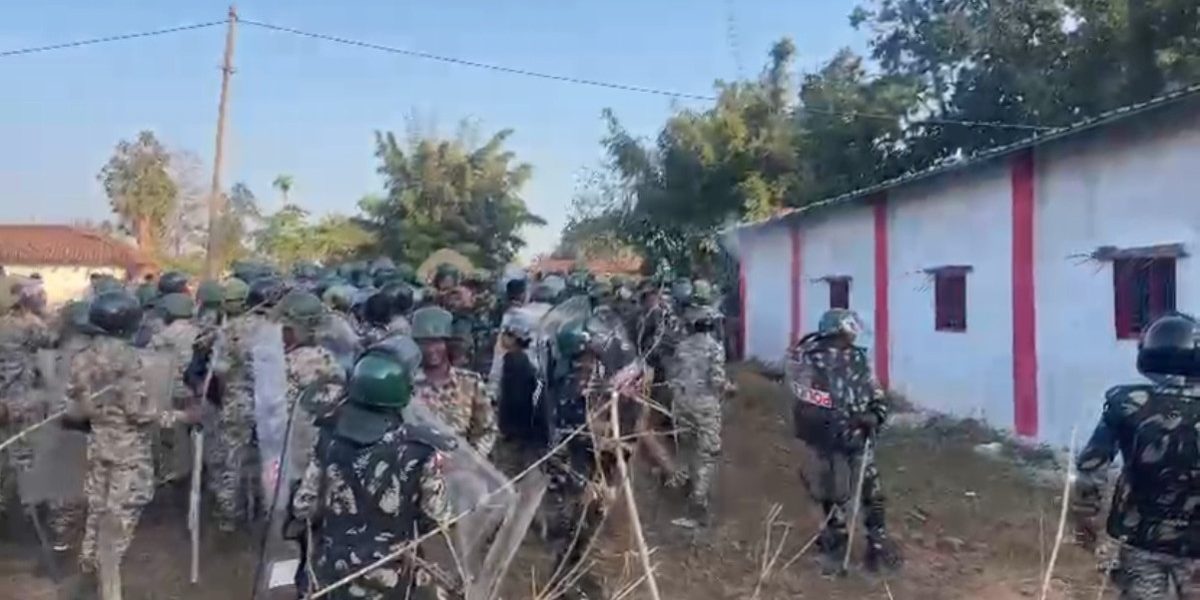By Udayan Das / The Wire
A mural in India’s new parliament building has become an object of controversy in South Asia. Alluding to the idea of Akhand Bharat, this ancient map appears to depict most of the current South Asian states as part of a larger, undivided polity of the past. Subsequently, the reveal has evoked negative responses from Pakistan, Nepal, and Bangladesh. These states raised concerns about how the claims implied in the map threaten their independence and sovereignty.
Historically, a number of nation-states have turned to civilisational arguments to couch their political claims, drawing from a cultural invocation of the past to legitimise the political claims of the present. For instance, consider the relationship between civilisational aspirations and irredentism, i.e. claims on other nations’ territories on an ethnic or historical basis. States assert territorial claims borrowing from a civilisational understanding of what its contours were in the past. Is India’s South Asia policy undergoing a paradigm shift based on civilisational aspirations? Is it likely to complicate India’s relations with its South Asian neighbours?
In a March 2023 International Affairs research article, Shibashis Chatterjee and I examined India’s civilisational arguments in South Asia, especially since 2014. Given the rise of the right-wing Bharatiya Janata Party (BJP) and the political space afforded to it by controlling a majority government, we asked, is there a Hindutva-driven South Asia policy? If indeed there is one, the core arguments espoused by the Hindu Right vis-à-vis South Asia, like the belief in and desire to restore Akhand Bharat, should reflect and feature in India’s strategies for the region.
Civilisational Narratives and Official Conduct
India’s civilisational arguments in South Asia under the BJP operate at two levels. At the official level, despite the ascendancy of the BJP regime, there is not a causal variable, official attestation, or endorsement of Hindutva in the making of India’s South Asia policy. When it comes to bilateral relations, India and its South Asian neighbours follow long-standing patterns and usual business. Even the current government’s efforts to emphasise India’s exceptionalism through its foreign policy are not new, though it does put more of an emphasis on cultural and religious elements. However, this has manifested itself in the championing of spiritual and cultural practices derived from Hinduism, such as yoga, while steering clear of controversial issues like muscular nationalism or homogeneity of faith that are usually associated with the Hindu right. However, the growing salience of cultural and religious elements does not signify a shift from the central tenets of India’s foreign policy. Cultural elements have been mostly about optics as India’s engagements with the South Asian states show more continuity than change.
There is no denying the occasional rhetoric and pandering to the ideas of India as a civilisational state, which has important implications for the South Asian region, though it does not translate into policy. In the case of Akhand Bharat, what this map reflects is a core civilisational claim of India’s Hindu Right when it comes to South Asia. According to this claim, all of modern South Asia is civilisational India. Well enumerated in the writings of Hindutva ideologues like Vinayak Damodar Savarkar and M. S. Golwalkar, this reading of history believes that the Indian civilisation was first culturally fractured by different religions, which finally resulted in territorial disjuncture through Partition in 1947. The imagery of Akhand Bharat carries the sentiment of past Hindu glory, a feeling of victimhood, and a resolve to reclaim the space.
This story was originally published in thewire.in. Read the full story here





